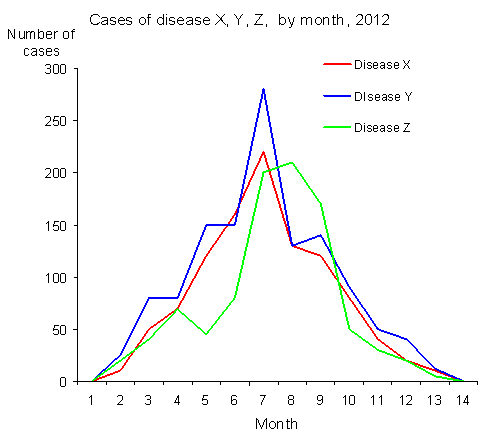Frequency polygons
A frequency polygon shows a frequency distribution emphasizing the overall pattern in the data. It is constructed from a histogram. The frequency polygon is a polygon - a closed two-dimensional figure of straight line segments - joining the mid points of the top of the bars of a histogram. The first point is on the x-axis (y = 0) and is placed in the middle of the interval which precedes the first bar of the histogram. The last point is located on the x axis in the middle of the interval immediately following the last bar of the histogram. The important issue is that, by joining the mid point of each bar and the x-axis at each end, the surface under the frequency polygon is exactly the same as the surface of the histogram. Therefore the principle of the histogram is respected. The same surface represents the same amount of data (cases).
Frequency polygons represent a simple way to show data of several histograms on the same graphic.
FEM PAGE CONTRIBUTORS 2007
- Editor
- Agnes Hajdu
- Original Author
- Alain Moren
- Contributors
- Maarten Hoek
- Lisa Lazareck
- Agnes Hajdu
Root > Assessing the burden of disease and risk assessment > Field Epidemiology > Outbreak Investigations > Informing Action / Improving Knowledge > Graphs, charts, diagrams

